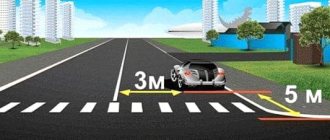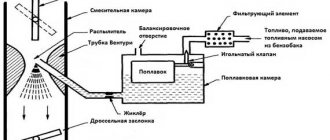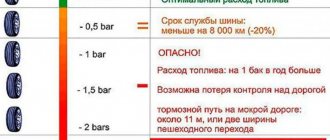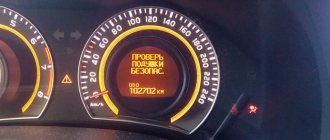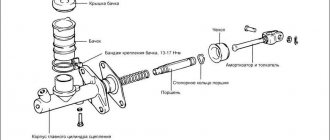A traffic island is a relatively new phenomenon on Russian roads, about which there are many contradictions in traffic regulations, and many motorists do not understand the rules for driving through these sections well and do not always understand why they receive fines. Let's try to briefly understand the rules for using this element of road safety.
Is it allowed to park (stand) on this section of the road, according to traffic regulations?
The traffic rules contain an exclusive list of road sections on which stopping and, accordingly, parking are strictly prohibited. There is no island of safety among them.
But it is worth remembering that these markings are applied to the zebra crossing, intended for pedestrians to cross the road, as well as to separate traffic flows. In the first case, they are intended for use in situations where a pedestrian does not have time to cross the road when the green light is on.
The photo shows the markings:
on zebra crossing 1.14.1
when dividing traffic flow 1.16.1
By stopping or leaving the car on this section of the road, the motorist will violate the traffic rules, where stopping and parking of vehicles at pedestrian crossings is not allowed (Read more about the fine for parking at a pedestrian crossing here).
Also, such islands are provided to separate traffic flows. If you refer to clause 12.4 of the traffic rules, you can read that it is prohibited to stop the vehicle in the area where roadways intersect , as well as closer than five meters from the edge of the intersection. In cases where there is a traffic island in these areas, stopping on it will be equivalent to this violation.
In cases where the markings are located outside the intersection, the prohibition on stopping and parking also remains. And here it is worth turning to the Rules of the Road, namely, paragraph 12.1, which allows the above actions on the right side of the road on the side of the road, and in its absence, at the edge of the roadway.
In populated areas, stopping and parking on the left side is allowed in single-lane traffic. But nowhere in the rules does it say that you can park a vehicle between oncoming lanes.
Another feature is that safety islands and guide islands, when applied to the roadway, are outlined with continuous horizontal markings 1.1, in accordance with GOST 52766-2007. And the traffic rules clearly state that crossing such markings is prohibited.
The photo shows markup 1.1:
Vehicles must be stopped only in places where stopping is permitted. To brush up on your knowledge of traffic rules, we recommend that you look at our materials about what other consequences may be for violating parking rules for stopping a vehicle:
- at the bus stop;
- by a pond;
- under signs prohibiting stopping, parking and parking;
- On Pavement;
- before the railway crossing;
- in the yards;
- on site for disabled people.
What it is? Definition
We will try not to sprinkle in legal terminology (although we absolutely cannot do without it), but to explain everything in a simple language that is accessible to most.
A traffic island is a place on a median or roadway in the area of a pedestrian crossing where pedestrians can wait to cross the road further.
This may be an area marked only by markings, or both markings and a curb (raised traffic island). In addition, there is GOST R 52766-2007 (regulates elements of the development of public roads), which sets separate standards. We'll talk about them in more detail below.
Let’s immediately make a reservation that we will not consider raised islands, and especially transitions in places equipped with fencing. Few people would think of driving or parking there. Our further task is to deal with the islands, indicated only by markings.
Moscow
Saint Petersburg
Free consultation
Moscow
Saint Petersburg
What fine and/or other sanctions are provided?
There is no direct prohibition on performing the maneuver in the traffic rules. A traffic police inspector can issue a fine based on the fact that the driver violated the marking requirements (you can find out how long the fine for parking in the wrong place is to pay and whether there is a statute of limitations here).
The standards indicate that elements directing movement (islands) are indicated by a solid line and inclined ones. Line 1.1 serves to mark the boundaries of roadways that prohibit driving through them.
- If marking rules are violated, i.e. crossing the lines delineating the traffic island, the motorist will be fined under Part 1 of Article 12.16 of the Administrative Code - he is charged with incorrectly observing the traffic rules prescribed by road markings. A fine can be issued in the amount of 500 rubles.
- Violating the rules provided for by traffic rules for stopping and parking, under Part 1 of Art. 12.19 of the Administrative Code, a motorist risks receiving a fine of 500 rubles, which can be replaced with a warning.
- Another option could be a sanction of 1,500 rubles, according to Part 3.2 of Art. 12.19 of the Administrative Code, for violation of parking and stopping further than the right lane from the edge of the roadway.
- And if the island was located near a pedestrian crossing, then you will have to pay 1000 rubles, this is regulated by Part 3 of the same article.
Basic provisions
First of all, in order to understand the very definition of “safety island”, you need to refer to the set of traffic rules. According to the generally accepted term, it is a specially equipped area on the road designed to separate oncoming traffic lanes or separate lanes for cyclists.
Special attention should be paid to horizontal markings (1.16.1, 1.16.2, 1.16.3.), which are applied to the road surface. They can be arranged:
- at unregulated and regular crossings;
- at an intersection where there is a roundabout;
- when entering populated areas (where there are frequent traffic jams).
The separation of the island can be in the form of a zone lined with curb stones above the roadway, road markings, or a separate section of dividing strip between traffic flows.
Nowadays there are many technical means to implement the assigned tasks. In practice, any material is used that is useful for stopping pedestrians while crossing the roadway at an equipped crossing.
What does it look like on the road and what is it intended for?
Any issues directly related to the design of safety islands are strictly regulated in legislative acts. For example, the most comprehensive interpretation of this concept can be studied in the Traffic Regulations, in the “Definitions” section - paragraph 2.42. It is there that all possible marking options are described in detail.
In fact, each island is a geometric figure, the sides of which are a solid line. Marking comes in several types and has different purposes:
- Serves for branching traffic flows (1.16.1).
- Helps merge routes with active traffic (1.16.2).
- Indicates islands where roads meet (1.16.3).
The classic traffic island is marked by road markings in an area free from vehicle traffic and is needed specifically for pedestrians. Thanks to this system, they have the opportunity to stop while crossing the roadway, if necessary, in a safe zone, rather than running across the road in front of oncoming traffic.
Controversial situations and ways to avoid punishment in such cases
Controversial issues also exist in such cases. You were given a fine for violating the markings, but the stop was forced. There are two situations worth considering here:
- The traffic police inspector issues a fine - if the car is really faulty, then you can explain the situation to the traffic police officer on the spot and thereby avoid a monetary penalty.
- The violation was recorded on camera - here the judge will have to prove his case. The camera only takes photos, so it is not clear whether you stopped due to a technical fault or are simply violating traffic rules. In this situation, you can try to explain in court that you did not plan to park, and the stop occurred out of necessity.
It is also necessary to check the articles specified in the protocol; if you were given a fine under an article that does not correspond to your violation, then such a decision can be challenged.
Islands in the middle of traffic flow, travel and parking
Stopping and parking at an intersection and on a bridge: what is allowed in the traffic rules?
When a friend of the author of the article, a truck driver from the United States, approached some exit from the highway, a striped section, reminiscent of a railroad in its markings, came into the frame. The author puzzled over why it was needed. It turned out that this is the so-called safety island for pedestrians. And this immediately begs the question: is it possible to drive on it, much less leave the car?
Traffic island markings
Official definition
Official documents define a traffic island as an element of the road network, clearly marked by a curb or markings. The main purpose is the ability for a pedestrian to wait out the passage of cars in the opposite or similar direction at the point of separation of vehicle flows.
First of all, islands are needed in crowded places, where there is traffic of mothers with strollers, wheelchair users, or heavy vehicle traffic and there is an approaching narrowing of the roadway.
Screenshot of the traffic island
Safety islands help not only pedestrians, but also cars. The screenshot shows that the area is narrowing and the exit zone for cars from the adjacent secondary highway is approaching. When the road curves, there is a high risk of a collision. A traffic island, even one not marked with a zebra crossing, helps traffic in the same direction pass.
Islands are often installed in pedestrian crossing areas. Thanks to them, pedestrians can wait for the lights to turn green on wide boulevards in the middle of the highway. But the main condition is the presence of bollards that block further passage of the car.
Safety island in the pedestrian crossing area
How is parking regulated on a traffic island?
Parking here is traditionally prohibited. The island is included in the pedestrian crossing zone, so it is subject to the rules for crossing intersections and zebra crossings.
Increasingly, not only bollards are appearing near such islands, but also cameras for photo and video recording of violations, aimed at reducing fines for driving through such objects. And in their decisions, traffic police officers refer to paragraph 1.16.2 of the second appendix.
A fine of 500 rubles is imposed under Article 12.16 of the Code of Administrative Offences.
The penalties for parking on a pedestrian traffic island are much more severe. Article 12.19 of the same code is already in effect here. For a violation, you will have to pay 1,000 rubles and search for the car for a while. For a similar violation within the intersection, no one will tow a car.
Modern mobile phone
Ambiguous point
Definitely, if a parked car on a pedestrian island threatens people’s lives, then you have to accept a fine. But the reference to clause 1.16.2 of Appendix 2 to the Traffic Regulations is easy to challenge. After all, it only designates a safety island and does not oblige the driver to anything.
If there is no zebra crossing or exit onto a highway or other busy street, inspectors may charge the driver with parking not in the first row in the direction of travel. However, such an act is punishable under Part 3.2 of Article 12.19 of the already familiar Code of Administrative Offenses.
The penalty is already one and a half thousand rubles, and the car is sent to the impound lot.
Incentive to follow the rules
In addition to the fine for parking on a traffic island, the driver must pay for towing services to the impound lot and storage of the car.
If the owner found out about the fine in the first hours, then you can get away with only 3,500-4,500 rubles, depending on the accrual.
For each day, starting from the second, a fee is charged in the amount of 40 rubles per hour, but more than 500-2000 rubles per 24 hours. The amount grows, and with it the risk of losing the car altogether.
AUTO TIPS decided to find out what bonus a law-abiding car owner will receive if he follows the rules of traffic islands. We took the best and most popular offers from Yandex Market as a basis. However, we consider it inappropriate to indicate brands. So, instead of a fine, we recommend buying:
- Seasonal car tire for dad and formula for baby.
- 4 packs of diapers.
- Electric kettle for your beloved.
- Stylish wristwatch.
- Car radio.
In the end, this money can be invested in an exciting event for the whole family or simply put aside for a dream purchase. Agree, it is better to please your loved ones or yourself than to please careless traffic police officers.
How can the traffic police prove your guilt?
When drawing up a report on an offense, the traffic police officer must provide compelling evidence of what happened. As a rule, materials on the violation made using video or photography are attached to the case.
The capabilities of modern technical devices make it possible to create an evidence base that illuminates the picture of the event with extreme clarity. If possible, the traffic police officer will certainly try to stock up on witness statements. To do this, directly at the place where the protocol was drawn up, eyewitnesses of the violation are asked to give testimony.
In large cities, violations of marking rules (crossing a traffic island) are recorded using automatic video cameras installed throughout the city. And in this case, the driver will receive the decision by mail in the form of a “chain letter”.
Pedestrian liability
Pedestrians are subject to liability for traffic violations:
- administrative,
- criminal,
- civil.
The first type of liability is established by articles of the Code of Administrative Offenses of the Russian Federation 12.29 and 12.30 (the violation resulted in interference with traffic, harm to human health of mild to moderate severity). In cases where, as a result of a violation of traffic rules by a pedestrian, circumstances arose that caused serious harm to health (Part 1 of Article 268 of the Criminal Code of the Russian Federation) or this caused his death (Part 2 of this article), or caused the death of 2 or more persons (Part 3), criminal liability arises. Due to non-compliance with traffic rules in situations where harm caused as a result of a violation affects the civil rights of citizens, pedestrians bear the obligations provided for by the Civil Code of the Russian Federation (Articles 8, 15, 1064, 1085 - 1094, paragraph 4 of Chapter 59).
It follows that the priority in the field of road traffic has always been, is and will be safety: both pedestrians and other participants. It is for this purpose that traffic islands were introduced at the legislative level. They are also designed for those on foot and those on wheels. Of course, in many ways the arrangement of these important elements itself does not reach the European level, but our state, we hope, is striving for this
The importance of this design is that it helps save many lives of both drivers and pedestrians
Where can and cannot stop and leave the car?
Stopping and parking (Chapter 12 of traffic rules) are allowed:
- On the side of the road on the right side. If it is not there, then it is on the roadway, closer to the edge.
- Is it possible to park on the opposite side of the road against traffic? On the left side of the road, parking and stopping are permitted in built-up areas on roads with one lane for each direction without tram tracks in the middle and on one-way roads.
- The car is placed in one row parallel to the edge of the roadway. Two-wheeled vehicles without a trailer can be parked in two rows.
- If the driver wants to stop for a long rest, then this is permissible outside the populated area in areas specially provided for this or off the road.
The method of stopping a car or parking is determined by sign 6.4. When a sign is combined with plates 8.6.4-8.6.9 and road marking lines, parking a vehicle is permitted at an angle to the edge of the roadway if the space allows such an arrangement.
Is parking allowed on the sidewalk? It is necessary to separate the concepts of “sidewalk” and “roadside”. A sidewalk is a space for pedestrian movement, separated from the road by a curb, lawn or green plantings.
You cannot park on the sidewalk, otherwise you may get a fine. The car may also be towed. Shoulder is a part of the road that is at the same level and is not separated by curbs or grass. It stands out with special markings. Parking is allowed there.
Parking on the sidewalk can be justified if there are technical malfunctions of the car or force majeure circumstances. They must be documented.
Violation of this rule is regulated by Article 12.9 of the Code of Administrative Offenses of the Russian Federation, paragraph 3. The fine is 1000 rubles.
Regarding permissible distances
Let's briefly answer the most common questions:
| How many meters before the stop can I park? | The distance is at least 15 meters to the stop of route vehicles and taxis. |
| How many meters before the intersection can I park? | The distance must be at least 5 meters to an intersection or pedestrian crossing. |
| How many meters before the pedestrian crossing can I park? | The distance should be 5 meters, no closer. |
How far from the turn can you stop your car? If visibility on road sections is less than 100 m, you should not stop the car before dangerous turns.
Traffic on tram tracks
One of the most common traffic violations is avoiding traffic jams along tram tracks. As we know, tram tracks are not roadways. Nevertheless, drivers receive a fine under Part 1 of Article 12.15 of the Code of Administrative Offenses of the Russian Federation for violating the rules of location on the roadway.
12.15.1. Violation of the rules for placing a vehicle on the roadway, oncoming traffic, as well as driving along the side of the road or crossing an organized transport or pedestrian convoy or taking a place in it
How is it possible that traffic is outside the roadway, but the fine is for being located on the roadway? It's simple, traffic on tram tracks is regulated by the rules of location on the roadway. A location outside the roadway that does not comply with the rules is a violation.
9.6. It is permitted to travel on tram tracks in the same direction, located on the left at the same level as the roadway, when all lanes in this direction are occupied, as well as when detouring, turning left and making a U-turn, taking into account clause 8.5 of the Rules.
This is the only condition for movement on tram tracks in accordance with the requirements of the Rules.
Are the islands safe?
It is important for pedestrians to understand that this area is marked only by markings. White paint applied to the road surface cannot with a 100% guarantee protect a person from harm.
The situation is different in European countries. The islands there are equipped with barriers. If, for example, there is a drunk driver behind the wheel, the design will stop the car, thereby preventing a collision with a person. For the same reason, people driving vehicles are more attentive on the road and observe the speed limit at crossings.
In Russia, islands are not equipped with such barriers. Thus, in theory they are safe for pedestrians, but in fact they are not. And this is due to the ignorance of many drivers of traffic rules. In addition, numerous accidents in these areas occur due to irresponsibility. A prime example is driving while intoxicated.
Horizontal marking
This includes everything that is “drawn” on the asphalt. Such lines indicate the order of movement along this section of the roadway. Horizontal markings on the road are useful not only for car owners, but also for pedestrians.
To decipher the meaning of the lines, use the following table:
There are certain types of horizontal markings that are not used in all cities. Eg:
See also: Assistant Arbitration Manager and its automated version
- 24.7 – looks like a rectangle and the letter D. Allows parking only for diplomatic vehicles.
- 24.3 – designates parking spaces allocated for disabled people of any group.
- 24.5 – only electric vehicles may park or move in this location.
All other types of markings only duplicate road signs.
Remember
- A safety island is made by markings or by raising it above the road.
- The island is needed to separate traffic flows and protect pedestrians on the wide road.
- The fine for crossing or turning around on an island is 500 rubles.
- The fine for stopping or parking on an island is 1,000 rubles.
- If the fine is not paid within 70 days, the fine will be handed over to the bailiffs, who will write off the amount of the fine from the account.
- To receive notifications about fines on time and pay fines at a discount, subscribe to notifications on the Traffic Police Fines website.
Is it possible to stop by
As you understand from what was written above, that in the text of the traffic rules, the phrase “safety island” does not appear, then there is no point in looking for an answer to the questions: is it possible to drive in or is it possible to park there?
Here you just need to pay attention to how the boundaries of these elements are marked? That's right, a solid marking line that cannot be crossed. True, there is one exception, but it has nothing to do with our question. By the way, I have written a separate article about solid lines, which describes all their types, purposes and possibilities of their intersection.
It turns out that we cannot cross a solid line, except if it marks the right edge of the roadway for the purpose of stopping on the side of the road, and therefore driving into a traffic island even more so.
How to receive notifications on time to pay a fine at a discount
It happens that due to a large influx of visitors, electronic services work with malfunctions or a long delay. This was the case when the president signed a decree on child benefits in June 2022. Parents began to process payments through government resources and overloaded the server. There was no access to other services, such as checking fines, for a long time.
In order not to depend on force majeure, subscribe to the traffic police fines notifications. The service takes information directly from the GIS GMP database. All duties, fines and taxes in favor of the state pass through it.
